This article has been reviewed according to Science X's editorial process and policies. Editors have highlighted the following attributes while ensuring the content's credibility:
fact-checked
peer-reviewed publication
trusted source
proofread
Mysterious new behavior seen in whales may be recorded in ancient manuscripts
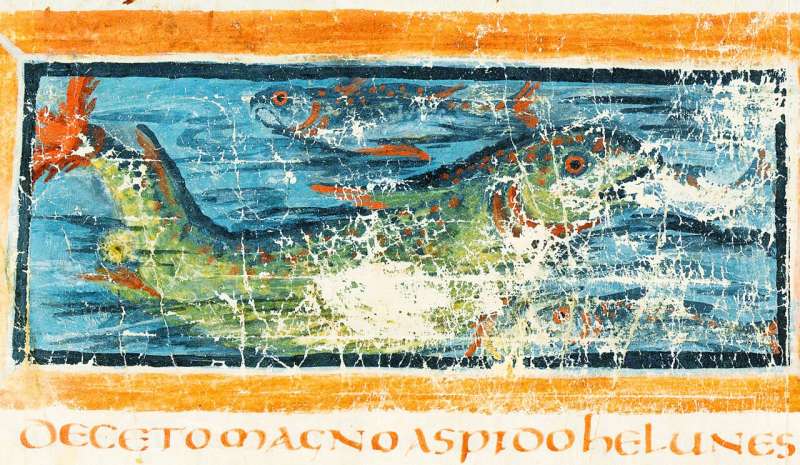
In 2011, scientists recorded a previously unknown feeding strategy in whales around the world. Now, researchers in Australia think they may have found evidence of this behavior being described in ancient accounts of sea creatures, recorded more than 2,000 years ago.
They believe that misunderstandings of these descriptions contributed to myths about medieval sea monsters.
Whales are known lunge at their prey when feeding, but recently whales have been spotted at the surface of the water with their jaws open at right angles, waiting for shoals of fish to swim into their mouths. A clip of this strategy was captured in 2021 and went viral on Instagram.
This strategy seems to work for the whales because the fish think they have found a place to shelter from predators, not realizing they are swimming into danger.
It's not known why this strategy has only recently been identified, but scientists speculate that it's a result of changing environmental conditions—or that whales are being more closely monitored than ever before by drones and other modern technologies.
Dr. John McCarthy, a maritime archaeologist in the College of Humanities, Arts and Social Sciences at Flinders University, first noticed intriguing parallels between marine biology and historical literature while reading about Norse sea monsters.
"It struck me that the Norse description of the hafgufa was very similar to the behavior shown in videos of trap feeding whales, but I thought it was just an interesting coincidence at first. Once I started looking into it in detail and discussing it with colleagues who specialize in medieval literature, we realized that the oldest versions of these myths do not describe sea monsters at all, but are explicit in describing a type of whale," says Dr. McCarthy. "That's when we started to get really interested. The more we investigated it, the more interesting the connections became and the marine biologists we spoke to found the idea fascinating."
Old Norse manuscripts describing the creature date from the 13th century and name the creature as a "hafgufa."
This creature remained part of Icelandic myths until the 18th century, often included in accounts alongside the more infamous kraken and mermaids.
-
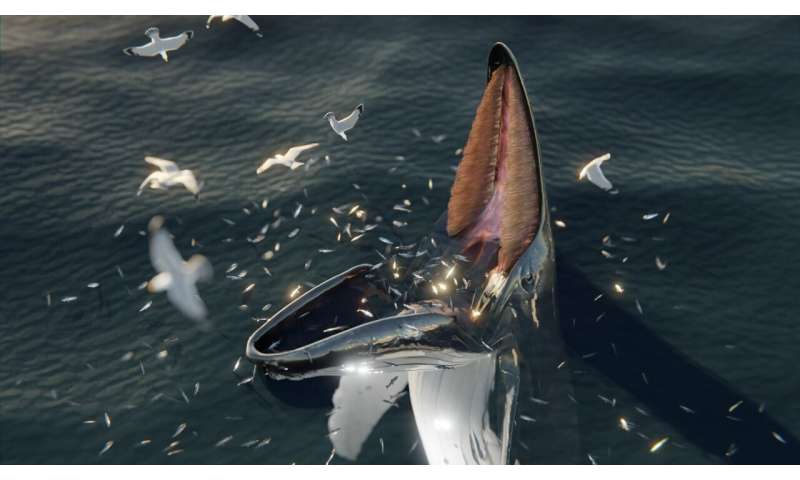
A digital reconstruction of a humpback whale trap feeding. Credit: John McCarthy, Flinders University -
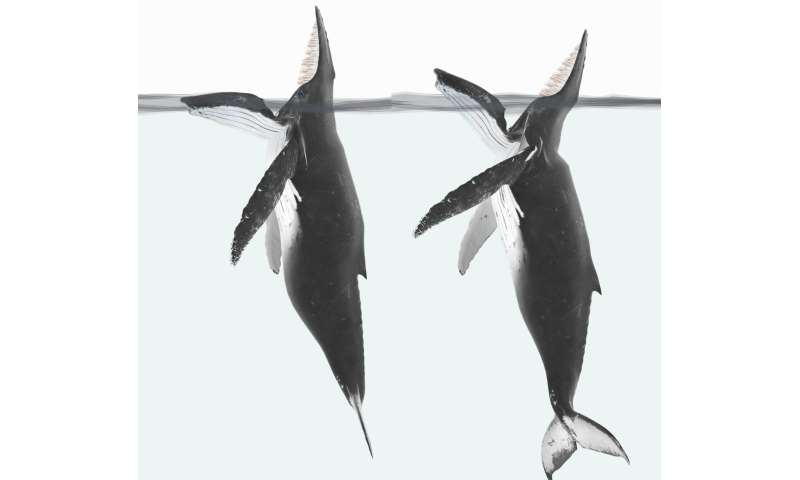
Diagram of humpback engaged in trap feeding; with a jaw either flush with the waterline, or raised to a similar height to the rostrum (J. McCarthy). Credit: John McCarthy, Flinders University
However, it appears the Norse manuscripts may have drawn on medieval bestiaries, a popular type of text in the medieval period. Bestiaries describe large numbers of real and fantastical animals and often include a description of a creature very similar to the hafgufa, usually named as the "aspidochelone."
Both the hafgufa and aspidochelone are sometimes said to emit a special perfume or scent that helps to draw the fish towards their stationary mouths. Although some whales produce ambergris, which is an ingredient of perfume, this is not true of such rorquals as the humpback.
Instead, researchers suggest this element may have been inspired by the ejection of filtered prey by whales, to help attract more prey into a whale's mouth.
Research co-author Dr. Erin Sebo, an Associate Professor in Medieval Literature and Language in the College of Humanities, Arts and Social Sciences at Flinders University, says this may be another example of accurate knowledge about the natural environment preserved in forms that pre-date modern science.
-
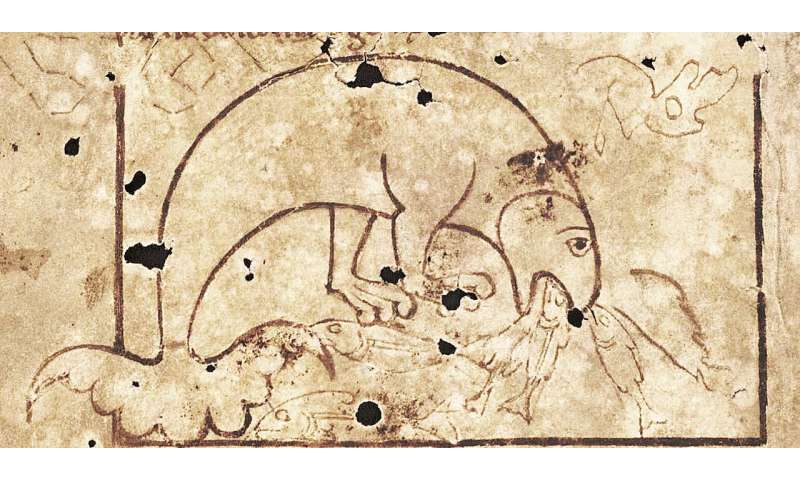
Icelandic Physiologus (c.1200) depiction of the Apsido feeding. Credit: Reykjavík AM 673 a II 4to fol. 3v Public Domain, color and contrast corrected -
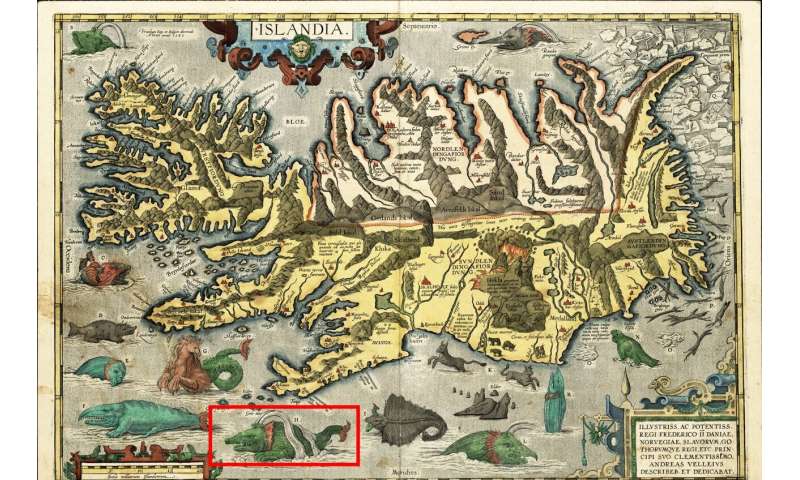
Above: Ortelius's 1658 map of Iceland showing various mythological sea creatures. Below, a detail of a sea creature labeled H, 'the greatest of whales' which could not chase fish but caught them through cunning. Credit: Public Domain, color and contrast corrected
"It's exciting because the question of how long whales have used this technique is key to understanding a range of behavioral and even evolutionary questions. Marine biologists had assumed there was no way of recovering this data but, using medieval manuscripts, we've been able to answer some of their questions."
"We found that the more fantastical accounts of this sea monster were relatively recent, dating to the 17th and 18th centuries and there has been a lot of speculation amongst scientists about whether these accounts might have been provoked by natural phenomena, such as optical illusions or under water volcanoes. In fact, the behavior described in medieval texts, which seemed so unlikely, is simply whale behavior that we had not observed but medieval and ancient people had."
The current study is published in the journal Marine Mammal Science, and the original 2017 description of the tread-water feeding behavior by whales in the Gulf of Thailand, published in Current Biology, is found here.
More information: Parallels for cetacean trap feeding and tread-water feeding in the historical record across two millennia, Marine Mammal Science (2023). DOI: 10.1111/mms.13009
Journal information: Current Biology , Marine Mammal Science
Provided by Flinders University















